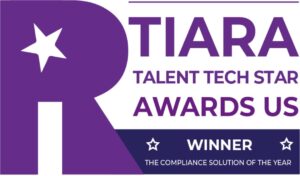No matter what company they work for, employees appreciate being informed about policies and procedures in the workplace. From compensation to leave benefits to their rights under the law, it’s important that companies put essential information right at employees’ fingertips. This is often done in the form of an employee handbook.
If you’re thinking about creating a handbook for your organization, you must consider how to make a compliant employee handbook — one that outlines and follows all federal, state, and local employment laws.
Elements to Include in Your Compliant Employee Handbook
Here are a few critical elements you should include to ensure compliance and set your organization up for success.
Welcome and Company Information
Your welcome section sets a positive tone for the remainder of the handbook. In this section, you may want to include a letter from the CEO as well as some basic information about the company for those who are new. This can include some history, a mission or values statement, and guidance on company culture.
New Hire Onboarding
New hires will pay close attention to your handbook to know what to expect as they begin their work for your organization. Clearly outline and explain the onboarding process, including probationary periods, how to obtain or replace an ID card, parking and access information, and a directory of contacts they can use when they have specific questions.
Policies & Procedures
You will have difficulty holding employees to a specific code of conduct if you haven’t informed them that there is one. Include yours in the employee handbook, along with daily work hours, arrangements for remote or hybrid work, dress codes, attendance policies, when and how to take breaks and mealtimes, and acceptable use policies for company technology and networks.
You will also need to include details and guidance for some challenging topics. These may include weapons, violence, drugs, alcohol, and sexual harassment.
Legal Requirements
Here, you will offer employees a summary of all applicable employment laws for just about any situation they may face at work. This should include, for example, labor and employment laws surrounding:
- The Family and Medical Leave Act (FMLA)
- The Americans with Disabilities Act (ADA)
- The Fair Labor Standards Act (FLSA)
- Equal employment and non-discrimination laws
- Workers’ compensation
- State-specific laws, e.g. the New Jersey Family Leave Act, The Texas Regularly Consistency Act, Colorado’s Equal Pay For Equal Work Act, Maryland’s Paid Family and Medical Leave Insurance Program, etc.
Remind your employees that all laws are subject to change, and the handbook in no way constitutes a contract for employment — the job can be terminated at will.
Health & Safety
Remind employees that safety is a priority in the workplace. In this section, you’ll want to include any emergency procedures, including evacuation routes and possible drills. If any of your employees work with hazardous materials, include policies and standard operating procedures around those substances.
Paid Leave & Benefits
This section should show employees the process for requesting time off for personal, medical, or legal reasons (such as jury duty) and explain how those requests are handled. Include a list of paid and unpaid holidays or yearly closures, and explain how sick or vacation time accrues. Accruals may vary by state, so be sure to include specific state addenda to your handbook.
In this section, you should also discuss healthcare and the benefits election process, retirement benefits, and any insurance policies (such as life insurance) that are offered to employees.
Compensation
Use this section of your handbook to outline payroll policies for all employee types. Employees should understand check-in and check-out requirements, timesheet policies, direct deposit, pay schedules, and what to do if they have a wage dispute.
Evaluations & Promotions
Explain all policies and timelines your company has for performance reviews and inspection of an employee’s work. Clearly outline how this information is used when considering employees for promotions and pay increases. If additional compensation is available for promotions, explain those bonuses and options.
Discipline & Termination
This can be a difficult topic to discuss, but employees need to know which actions can result in their termination. Here, you should outline the company discipline process and what behaviors may initiate it. Don’t forget to include information about the grievance process and the steps each employee must take to get it started.
A Few Tips for Remaining Compliant
It’s vital that your company handbook be legally compliant with all applicable employment and labor laws. Here are six tips for ensuring that it is:
- Create localized versions of your handbook to cover special laws in each jurisdiction where your employees work
- Don’t copy handbooks or policy documents from another existing business
- Train all managers in all applicable policies listed in the handbook to ensure fair treatment of all employees
- Have your legal counsel review it to ensure you aren’t making any contractual agreements without realizing it
- Ensure every employee gets a handbook by posting it on the company intranet, sending it via email, and making physical copies available to everyone, in particular at the beginning of employment and anytime changes are made
Note that your employee handbook is not a one-and-done document. Update the handbook whenever there are changes in employment law or internal policies so employees have the latest information.
Create Your Compliant Employee Handbook the Easy Way
Creating an employee handbook can be a daunting task. With so many constantly changing employment and labor laws, it can be challenging to keep track of them and ensure they all make it into your handbook. How can you stay compliant and maintain your peace of mind?
Fortunately, VirgilHR’s Employee Handbook Builder takes the stress out of the process. With its upgrades, you can create accurate and compliant handbooks with general, state, and local policies. In just a few clicks, you can export your handbook and distribute it to all employees. Best of all, you can quickly update your handbook whenever you need to.
Whether you’re an experienced HR pro or just getting started, VirgilHR’s advice and easy-to-use tools can save you time and frustration. Contact VirgilHR today to learn more and get started on your compliant employee handbook.






